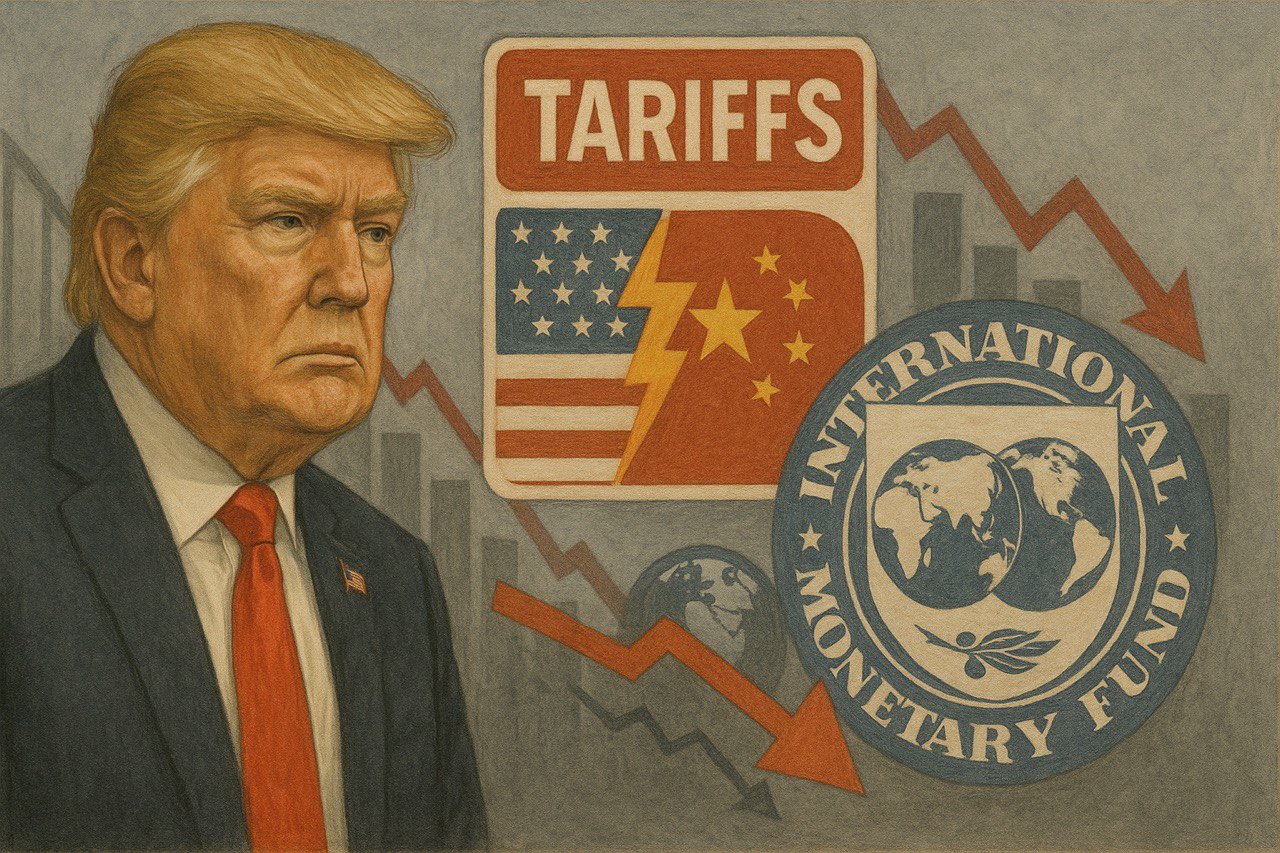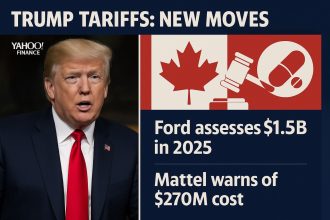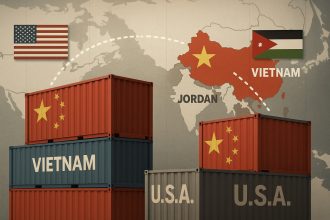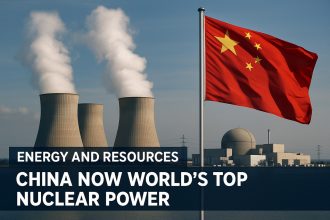Imagine you’re at the grocery store on a Saturday afternoon, May 3, 2025, and suddenly, the prices of your favorite imports have shot up. That carton of orange juice from Brazil? Now it’s 20% more expensive. Your beloved Italian pasta? Same story. Why? Because of tariffs—taxes on imported goods that can make everyday items costlier. But tariffs aren’t just about higher prices at the store. They’re a tool in a much larger game: the global trade war. And recently, the International Monetary Fund (IMF) has sounded the alarm, revising down its economic growth forecasts for the United States and the world, all because of this escalating trade tension.
As someone who’s spent a decade writing about everything from personal finance to global economics, I’ve seen how policies like these can ripple through our lives in unexpected ways. Today, I want to break down what’s happening, why it matters, and what it might mean for you and me. Let’s dive into the numbers, the stories, and the human impact, all while keeping it conversational, like we’re sharing a coffee together.
Understanding Tariffs: The Basics
Let’s start with the basics. Tariffs are essentially taxes on imported goods, designed to make them more expensive and thus less attractive compared to domestic products. The idea is to protect local industries and jobs. However, when countries retaliate with their own tariffs, it can lead to a downward spiral, hurting economies on both sides.
In the case of the US, President Trump has implemented tariffs on a wide range of goods from various countries, citing reasons such as reducing trade deficits and protecting American workers. These tariffs, now at 100-year highs, have been a central part of his economic strategy, but they’ve also sparked a global trade war. Recent reports, such as those from Reuters, highlight how these measures are reshaping economic outlooks, with the IMF compiling a rapid update to its World Economic Outlook just 10 days after tariff announcements.
The IMF’s Stark Warning: Revised Forecasts
In its latest World Economic Outlook, released on April 22, 2025, the IMF painted a grim picture. Global growth is now expected to be 2.8% in 2025, down from a previous forecast of 3.3% in January. For the US, the outlook is even more concerning, with growth projected at just 1.8% for 2025, a significant drop from the 2.7% predicted earlier this year. Looking ahead, 2026 isn’t much better, with US growth expected to hover around 1.7%.
But it’s not just about growth. Inflation is also expected to be higher than previously thought, with global inflation at 4.3% in 2025 and 3.6% in 2026, according to IMF insights. For the US, inflation is forecasted to rise to 3% in 2025, up by a full percentage point from January’s estimates. This means higher prices for consumers and more pressure on central banks to manage inflation.
Pierre-Olivier Gourinchas, the IMF’s chief economist, described this as entering a “new era” where the global economic system is being reset. He warned that the current trade tensions could further slow down growth if they escalate. “We are entering a new era,” he said in a recent briefing. “This global economic system that has operated for the last eighty years is being reset.” This perspective, echoed in various economic analyses, underscores the profound shift driven by tariff policies.
To break it down, here’s a table summarizing the key IMF forecasts:
| Entity | 2025 Growth Forecast | Change from January | 2026 Growth Forecast | Change from January | Additional Notes |
| Global | 2.8% | -0.5 pp | 3.0% | -0.3 pp | Inflation expected at 4.3% in 2025, 3.6% in 2026, up due to tariffs. |
| US | 1.8% | -0.9 pp | 1.7% | -0.4 pp | Inflation projected at 3% in 2025, up 1 pp from January; recession odds up to 37%. |
| China | 4.0% | -0.6 pp | 4.0% | -0.5 pp | Tariffs impact ~1.3 pp in 2025, offset by fiscal measures. |
| Global Trade | 1.7% | -1.5 pp | – | – | Reflects accelerating fragmentation, down from 2024 growth. |
This table, derived from recent IMF reports, illustrates the breadth of the impact, with global trade growth dipping significantly, reflecting accelerating fragmentation.
Global Repercussions: A Worldwide Effect
The trade war’s impact is felt far beyond US borders. In China, the world’s second-largest economy, growth is now expected to be 4% in 2025, down from a previous forecast of 4.6%. This represents a significant slowdown for a country that has been a major driver of global growth, as noted in Bloomberg’s coverage. Canada, a close trading partner of the US, sees its growth forecast cut to 1.4% for 2025, down from 2.0%. Mexico, another key trading partner, is projected to enter a deeper recession than earlier anticipated, with economic indicators pointing to increased strain.
Even countries not directly involved in the trade dispute are affected, as global trade volumes are expected to shrink. The IMF projects global trade growth to dip to 1.7% in 2025, a significant downward revision from previous forecasts. This slowdown in trade can have cascading effects on economies worldwide, as trade is a key driver of global economic activity, a point emphasized in CNBC’s analysis.
The Human Impact: Stories Behind the Numbers
But beyond the numbers, there’s a human story here. I recently spoke with a friend who owns a small business that imports goods from Asia. He told me that the increased tariffs have forced him to raise prices, which in turn has led to a drop in sales. “It’s like being caught in a storm you didn’t see coming,” he said. “I’m not just worried about my business—I’m worried about my team. What if we have to let people go?”
For the average American, this means higher prices for a wide range of products, from electronics to clothing. It’s a hidden tax that we all pay when we go shopping. And for those working in industries that rely on international trade, the uncertainty can be palpable. As someone who’s always been fascinated by how global policies trickle down to everyday life, I can’t help but think about how these changes are reshaping our communities. Recent reports suggest consumer sentiment has dipped for the fourth month in a row in April 2025, weighed down by tariff concerns, as noted in World Economic Forum insights.
Navigating Uncertainty: Practical Tools
In times like these, when economic forecasts are gloomy and markets are unpredictable, many people are looking for ways to protect their finances. A colleague of mine recently mentioned PocketOption, a trading platform that allows users to trade various assets, including stocks, currencies, and commodities. It’s not a solution to the trade war, but it might be a way for some to navigate these turbulent times.
Looking Ahead: A Call to Action
As we stand on the brink of this new economic era, it’s crucial to stay informed about how global policies affect our daily lives. Whether you’re a business owner, an investor, or just a consumer, understanding the implications of trade wars and tariff policies can help you make better decisions. The IMF’s forecasts serve as a reminder that the actions of governments can have far-reaching consequences. While the US economy is still expected to grow, the revised numbers indicate that the path forward is fraught with challenges. And while a recession isn’t the baseline scenario, the risks are higher than before, with recession odds for the US climbing to 40% from 25%, as per recent IMF updates.
What are your thoughts on this shifting economic landscape? I’d love to hear from you in the comments below. How do you think these trade tensions will affect your life or your community? Let’s start a conversation, fostering a dialogue on how we can adapt and thrive amidst these changes.





